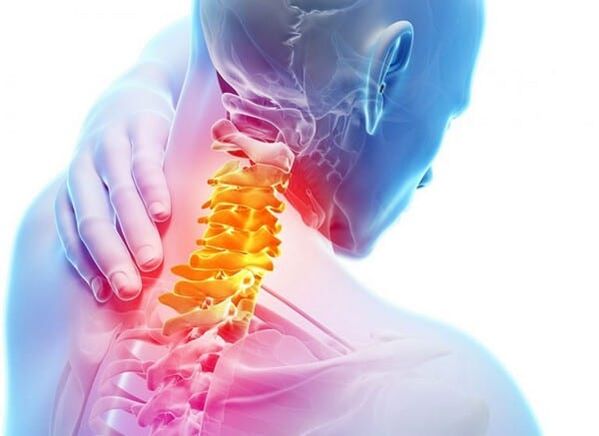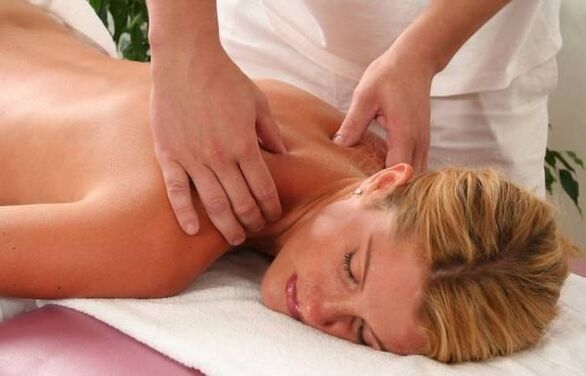
Symptoms of cervical osteochondrosis can occur at any age, but the risk increases after 25 years.The faster treatment begins, the more the chance to stop the disease in the bud and to avoid unpleasant complications.
Symptoms of osteochondrosis of the cervical back
Signs of the cervical spine in the initial stage of the disease can be lubricated, manifested episodically and not immediately warns the patient.
Osteochondrosis-more than the deformation of the vertebrae of a spine associated with degenerative (destructive) processes enjoying it.
The reasons may be different:
- Constant physical overload, uneven muscle stretch, long stay in a static position (sitting on the computer, driving a car);
- Neck damage;
- Improper food with a predominance of fatty, salty, acute foods;
- Alcohol abuse and cigarettes;
- Metabolic and endocrine disorders.
At risk, people who have loaded inheritance, overweight and patients with rheumatism.Syntalization, severe stress, can provoke an irritation of the cervical osteochondrosis.
Under the influence of external or internal factors on the spine, pathological processes associated with a change in the shape and position of the vertebrae, cartilage refining and bone growth formation.
All this leads to the blood vessel pinchs and nerve endings.Brain nutrition is disturbed, pain and discomfort appear.
Symptoms of cervical osteochondrosis include:
- Headache and dizziness;
- Weakness, prefabricated condition, pallor;
- A sense of general wrongdoing, weakness, constant fatigue;
- Pain in the neck, nape, shoulder band, cramp when you turn your head.
At the same time, visual acuity can decrease, deteriorate, patients complain of noise in their ears and "fly" in front of their eyes.The symptoms prescribed are the result of intrigue disorders.
A long-term violation of blood supply to the brain causes migraine, vegetative-vascular disorders, respiratory pathology and cardiovascular system.
The vertebrae of the cervical region are very mobility with a small size, and the neck muscles are relatively weak.The cervical spine is adversely affected by static and high physical activity.
Degree of illness
There are 4 degrees of cervical osteochondrosis.Each of them corresponds to their symptoms, but in some cases a specialist can not only make an accurate diagnosis.
- Spinal deformity is in its beginnings, in the cartilage and bone tissue the changes are almost not obvious, the developing symptoms are episodic.Patients associate pain and discomfort with excessive work, stress, physical exercise;
- The shape and height of the intervertebral disk varies, its integrity can be violated.At this stage, the pain in the neck, the shoulder belt becomes constant.He can become numb, his head hurts.
- Intervertebral hernia, squeezing the nerves and blood vessels, cause severe headaches, weakness, dizziness, pre -war and weak conditions.The patient feels fatigue, pain in the back of the head, noise in the ears.
- The vertebrae is deformed, bone growths appear on them - accumulated osteophytes.The vertebrae of the neighboring departments suffer, the usual movements are disturbed, their amplitude decreases, each movement is associated with severe pain in the neck, shoulder and kolarbone.

Treatment of cervical osteochondrosis
In men, cervical osteochondrosis is less common than in women, it begins later, but the symptoms are more pronounced and the disease develops faster.At the first signs of home disease, it is necessary to begin affordable treatment:
- Daily neck gymnastics include simple exercises that develop the back and muscle apparatus that improve blood circulation (circular neck rotation, shoulder slope, backpack and so on);
- Alcohol and oil compresses, salt heating pads (cannot be used in the acute phase) will help relieve neck pain;
- To relieve the symptoms of cervical osteochondrosis will help the use of drugs - spasmias, sedatives, anti -inflammatory drugs.
In the first signs of degenerative deformation processes in the cervical region, you should seek medical help.As a rule, conservative treatment is determined:
- physiotherapy;
- Massage (necessarily - professional!);
- Taking medicines that not only relieve the symptoms of the disease but also contribute to the restoration of cartilage tissue - chondroprotectors in tablets or injections.
Cervical osteochondrosis is easier to warn than cure.
Among the preventive measures are the rejection of harmful salty and acute foods, compliance with the work and rest regime, balanced physical activity.














































